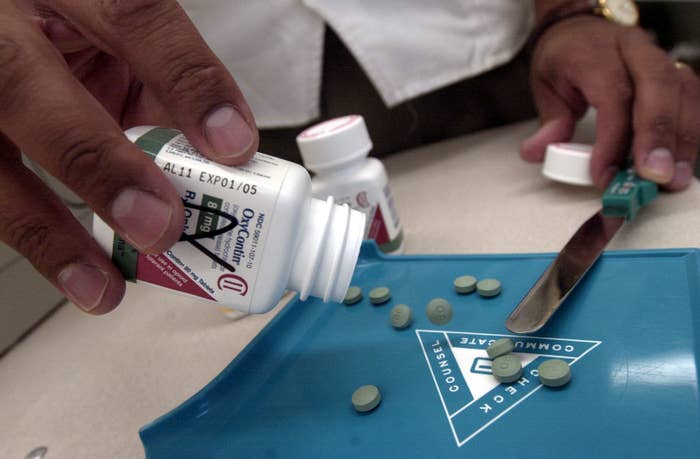
Roughly a quarter of people prescribed an opioid painkiller for just 12 days will still be taking the drug a year later, a new study said on Thursday. Nearly half of those taking opioids for just a month, it found, will be hooked a year later.
The study, published by the US Centers for Disease Control and Prevention, looked at prescription data for nearly 1.3 million non-cancer patients who were prescribed opioids, painkillers such as Vicodin and Oxycontin, for the first time in the years 2006 to 2015. The researchers were then able to determine what percentage of people who were first prescribed opioids for short-term use — to treat things like surgical pain, fractures, or headaches — ended up staying on the drugs long-term.
While the CDC published recommendations last year warning physicians of the dangers of prescribing opioids long-term for pain, questions remained about when patients initially prescribed opioids for short term issues ended up dependent on the drugs for an extended period of time.
The study found that roughly 6% of patients with a one-day supply of opioids were still taking the drug a year later. That percentage doubled when patients were prescribed a 6-day supply, and doubled again to roughly 24% when patients were given a 12-day supply.
Nearly half of the total number of patients prescribed a one-month supply would still be taking the drugs one year later. Roughly a quarter of patients prescribed a one-month supply would still be taking the pills three years later, the study found.
"No one’s really come up with a definition for when chronic use really begins," Bradley Martin, professor of pharmaceutical evaluation and policy at the University of Arkansas for Medical Sciences and lead author of the study, told BuzzFeed News. "We were not anticipating that graph to look as steep as it does in the first 15 days, that rapid. That surprised us."

The study comes amidst an opioid epidemic that is killing more Americans each year. In 2015, nearly 15,000 people died from overdoses involving prescription opioids, a number that has quadrupled since 1999.
While the study focused on prescribing patterns, it could not go so far as to say which patients had developed patterns consistent with addiction. Experts differentiate between patients merely physically dependent on the drug and those with full-blown addiction, a disease where people compulsively seek out and use drugs for non-medical purposes, despite harmful consequences.
But the results of the study show that patterns of long-term opioid use are set in the first few days of drug use, a fact that the researchers argue needs to be taken far more seriously in doctors' offices since chronic opioid use increases the risk for addiction, as well as the risk for overdose.
"It’s unlikely when physicians are writing a second refill that they're thinking, 'Wow, I just doubled the chance of this patient being on opioids one year later,'" Martin said. "But they should."
